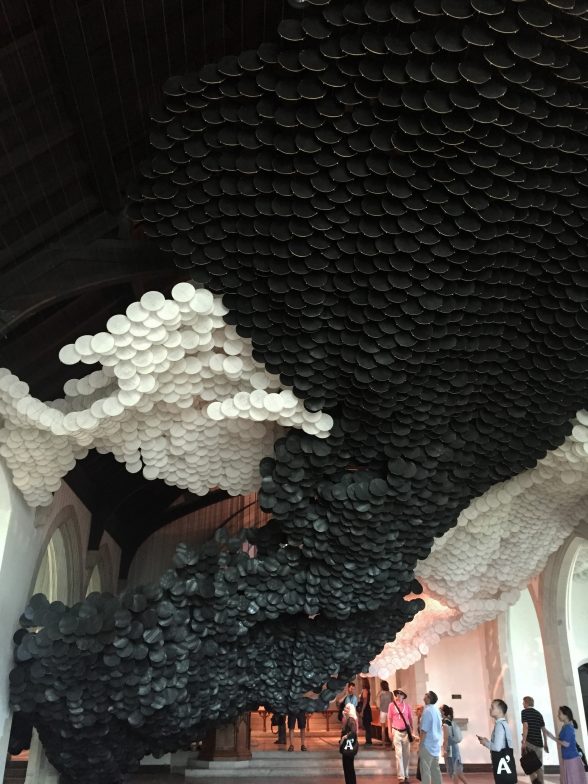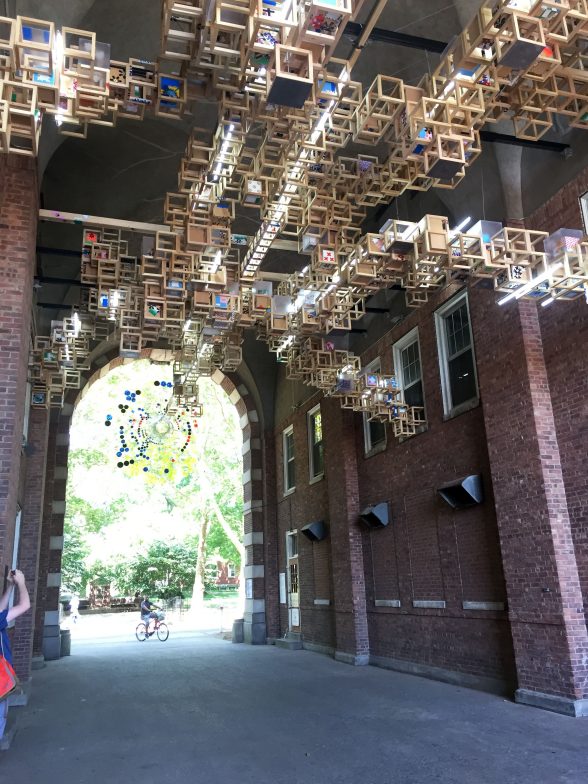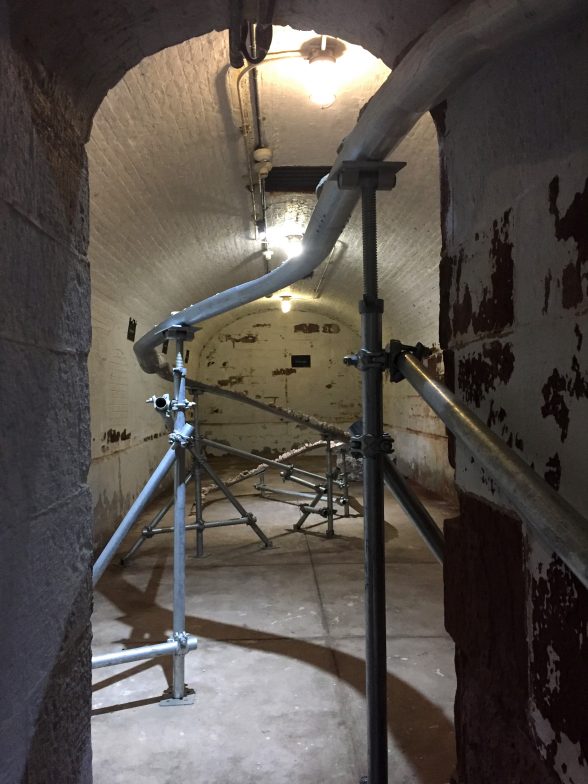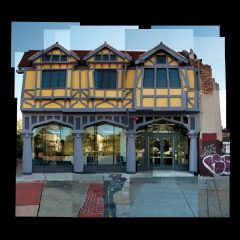Wouldn’t it be great if you could escape the mayhem of city life and sail away to a picturesque island in just ten minutes? In New York City, you can! Since 2003, Governors Island has undergone a major redevelopment from former US military base and national park into a 172-acre recreational and cultural destination to be enjoyed by the public year-round — blending modern landscape design with meticulously preserved military buildings. The Trust for Governors Island has revived the former military housing and operational structures with new life as offices for non-profits, art galleries, educational facilities, and commercial amenities. You can even go glamping with a spectacular view of the Statue of Liberty!
On an Art Safari
Intrigued by the historic island’s adaptive reuse masterplan, I sign up for a trip while attending the annual American Institute of Architect’s conference in New York City. For $3 (round-trip), I hop on a ferry at Battery Park and make my way to the solitude of Governors Island. Upon exiting the terminal, I am transported into what feels like a utopian movie set. There are no cars, no permanent residents, no advertisements, no rats crawling out of trash cans, only happy people leisurely strolling along tree-lined quiet streets and cruising around on surrey bikes. I hop on a bike and begin aimlessly exploring. Expecting to learn about the island’s former housing and history; I end up on an art and architecture safari.
My first stop is Nolan Park, where I come across the old stone Chapel of St. Cornelius the Centurion. Peeking in, I am overwhelmed by a tidal wave of suspended monochrome disks that permeate the space like a cloud of smoke. Designed by New York City artist Jacob Hashimoto, the installation, The Eclipse, was originally featured at the 57th International Art Exhibition in Venice and has since been adapted to compliment the chapel’s architecture.

Next, I pass through a vaulted brick archway at the former infantry housing, the Liggett Arch, where I look up to find another of Hashimoto’s pieces, Never Comes Tomorrow. A colorful metal vortex fills the arch, pulling you into a constellation of tiny wooden cubes that float above the arch’s deep passageway. It was evident Hashimoto adapted this monumental piece to commemorate the threshold, which signifies the transition from the island’s historic footprint to its 1911 expansion.

The Unexpected Breeds Curiosity
Despite the island’s seclusion, the view of the Manhattan skyline never disappears. Curiosity draws me to an open cellar door leading from a colonial-style house in Fort Jay. A series of intermingled scaffolding carrying boring samples of rock, dirt, and clay flow through a brick tunnel and into the fort’s former ammunition cellar. What I initially mistake for archeological work-in-progress turns out to be an installation commissioned from New York artist, David Brooks, featuring geological samples from around the island. Aptly titled Rock, Mosquito, Hummingbird, its commingled roller coaster structure conveys the contrasting trajectories of its subjects – elongated rock formation, wavering mosquito movement, and frenetic hummingbird flight.

Since 2005, the trust for Governors Island has worked with various artists to curate a rotating exhibit of site-specific installations that complement the island’s architecture, history, and geography. The resulting fusion of art and architecture transforms the visitor’s spatial experience, inspiring curiosity and evoking interaction with the environment. Likewise, the unexpected placement of interventions conjures a sense of adventure and discovery, reinforcing my appreciation for the island and its rich history. Had I not been curious about what lurked behind the historic chapel door or in the depths of the fort cellar, I would have never discovered the art that resides within. Similarly, I would not have continued to explore the engineering marvels of the cellar’s brick archways or admired the chapel’s stained glass hidden behind the altar, had the art not drawn me in.
Bringing the Lesson Home
I think of my daily commute to and around Center City and some of the remarkable public art I’ve encountered. Regretfully, I have become desensitized to the power of these pieces due to their placement in expected spaces. Meg Saligman’s Common Threads mural on the West side of the Mural Lofts building overlooks a parking lot; Robert Indiana’s famous LOVE sculpture creates a focal point in a sterile plaza at Love Park; Mark di Suvero‘s Iroquois sculpture fills a grassy median isolated by the traffic-congested streets of the Ben Franklin Parkway. I have come to anticipate a sculpture to fill an open urban space and a mural to activate a blank wall.
The city of Philadelphia, rich with historical and cultural significance, is an open museum. What if Philly took a cue from Governors Island and integrated public art, not as a remedy to cover up urban planning flaws, but as a means of celebrating and encouraging interaction with its architectural, historical, and geographical gems? We could transform the city’s urban fabric into a treasure map of art and culture, left to be discovered in unexpected places or simply to evoke new experiences in spaces we know well (the archways of City Hall, SEPTA’s meandering pedestrian concourses, 30th Street Station, the archway of the 13th street Convention Center, the alleyways of Chinatown, inside Reading Terminal Market, etc). While I’m not suggesting that public art should be hidden, there is something to be said for the rewards of discovery. After all, not all who wander are lost.
Jacob Hashimoto’s and David Brooks’s work will be on display daily at Governors Island through October 31, 2018. The 11th annual Governors Island Art Fair opens September 1, 2018 and runs through September 30, 2018.









